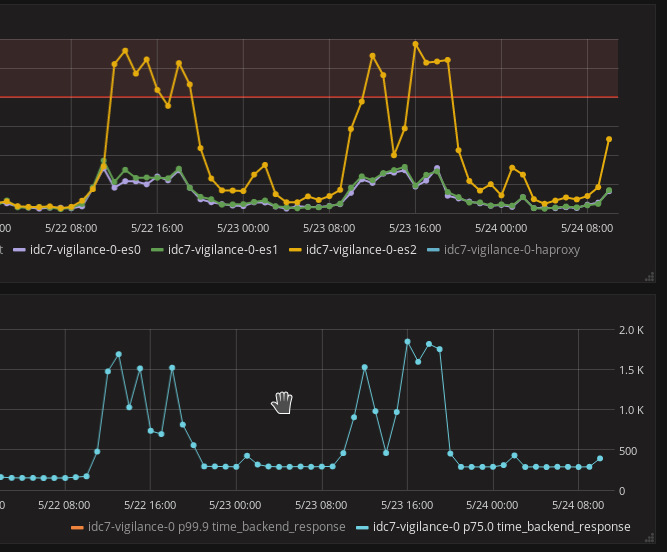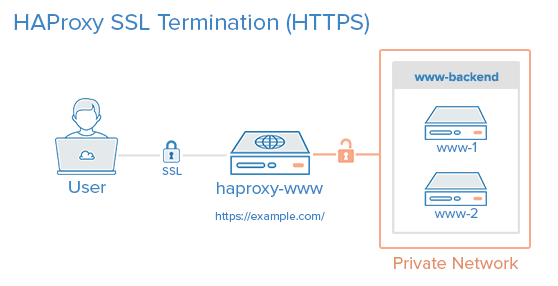1. Security
Port Limitations
As a business owner or system administrator, security is your priority. Competitors or evil hackers shouldn’t have the opportunity to hinder your business processes causing you to lose money. A reverse proxy will expose only e.g. port 80 and 443 on your website domain name. Your web server is not exposed to the public to be attacked on SSH, MySQL port or any other service it might have on.
Note of warning: A hacker can still gain access to your system if your web application has security vulnerabilities such as MySQL Injection vulnerability.
IP Based ACLs
Almost all popular CMS have a back-office or management section for administrative purposes. Problem is everyone has access to these back-office links and hence bots can brute-force the usernames and password to gain access to private informations.
acl is_admin path_beg /wp-admin acl is_local src 192.168.100.0/24 http-request deny if !is_local is_admin
In this example, if someone tries to access a wordpress admin panel from an IP other than the subnet 192.168.100.0/24, the request will be denied
2. Performance monitoring
HAProxy can be configured to send logs to a syslog server (which can be local too). You can then analyze these logs and store them into a high-speed time series database such as ElasticSearch. You can use the Collectiva service to setup and analyze the logs for you
You can visualize the data so as to display the 75th percentile response time. Using percentiles instead of mean average provides a better view on the real world performance as outliers are ironed out. An example is let’s say your website usually serves clients under 100ms 99% of the time but there is one cron that takes 1 minute to run every 5 minutes. Your average response time will be much higher. It becomes difficult to know when is the server actually slowing down.

3. SSL Certificate Management
Securing your website with SSL is no longer a luxury feature. It’s a must and it’s free.
SSL termination is what I mostly use because it’s a lot easier to maintain.

Your web application might be a simple PHP/Apache, NodeJS daemon, Python daemon whatever. Each of these applications have there own ways to implement SSL certificates in their configuration files or panels. I ain’t got time to go learn all these platforms to implement SSL on my websites. Now imagine for each web-service you have multiple server backends. It’s not easy to keep all the certificates in sync when you’re renewing the certificates.
Having a load balancer at the front handles all the certificates for all domains is really convenient. As a system administrator, I don’t have to care what the developers are doing as long as they speak HTTP.
NOTE: Your application needs to take into account the `X–Forwarded–Proto` of the HTTP header for this to work. Else you can just force the application to print https links all the time.
4. Redundancy
Downtime is bad for business. No matter how good your servers are or how highly qualified your system administrators are, your servers and services are eventually going to fail at some point in time. The best you could do is plan for it. Having multiple servers for your website or webservice is the becoming the norm specially with the rise of containers such as LXC and Docker technologies.
The reverse proxy takes in all the requests, checks if there are servers capable of serving them then forwards the requests to the latter.
Let’s say you have 3 apache servers serving the same exact content and 1 of them dies, the load balancer will redirect the rest of requests to the other 2. The end-users nor your boss will know something is wrong unless you tell them something actually went wrong.
5. Load Balancing
We were born small. Through the years our body size increased till we reach our designated height. It’s the same principle with startup businesses. At first they don’t have lots of clients and resources. Those who survive have to more and more clients to serve.
Having a load balancer helps you start a website with just 1 tiny backend server. As more requests come in, just replicate the backend server more and more until the all the end-users are served. And also when times are bad, you can also reduce the amount of backend servers.
Run your business lean.
6. Freedom of Infrastructure (Bonus)
Just a combination of all the points discussed above. I think the only constant in an IT infrastructure is reverse proxies/load balancers known as frontal servers. The rest should be able to quickly adapt to new technologies, programming languages and paradigms.
What is your favorite load balancer and why? Tell us in the comments
A sad news
HAProxy doesn’t yet support HTTP/2 protocol as of time of writing. It was supposed to be in HAProxy 1.6 but it’s not in version 1.7 yet.